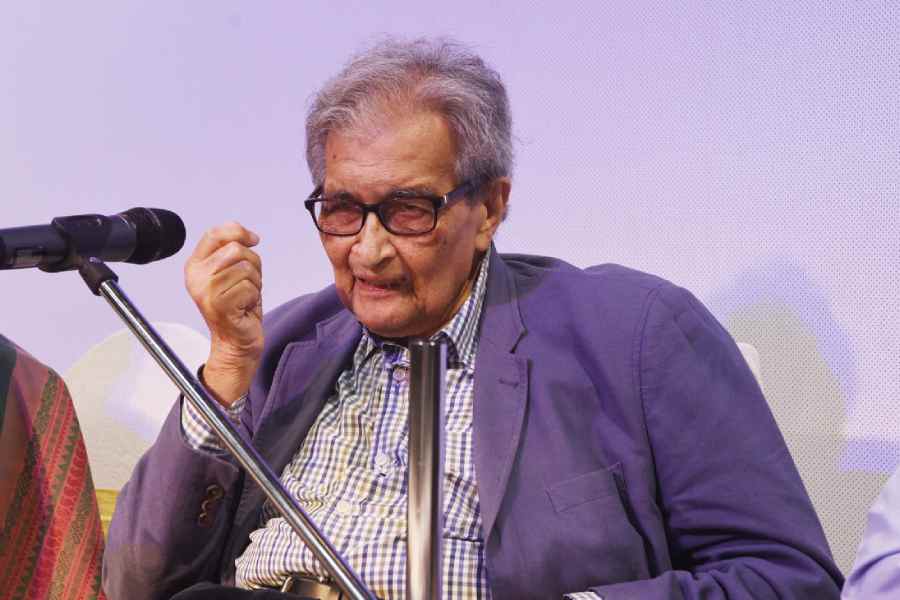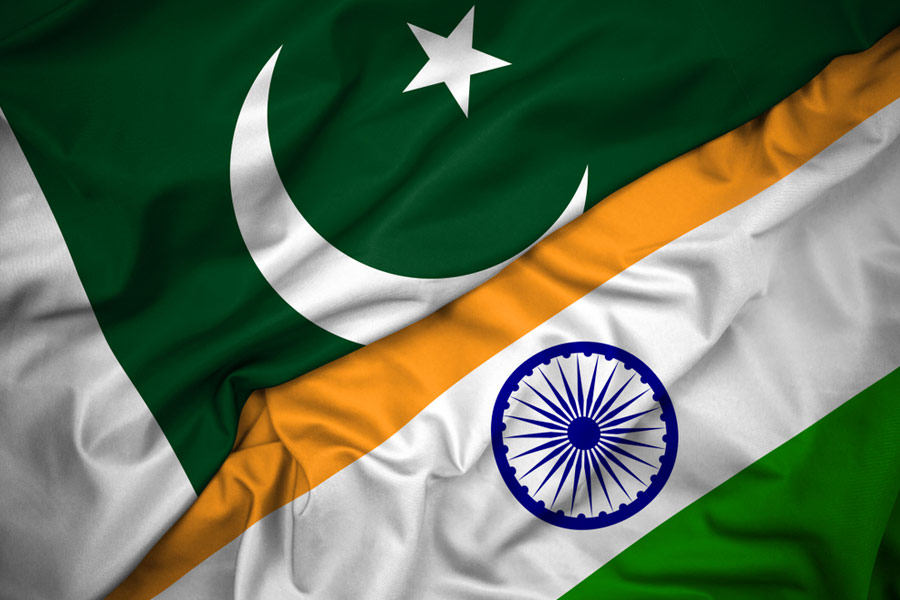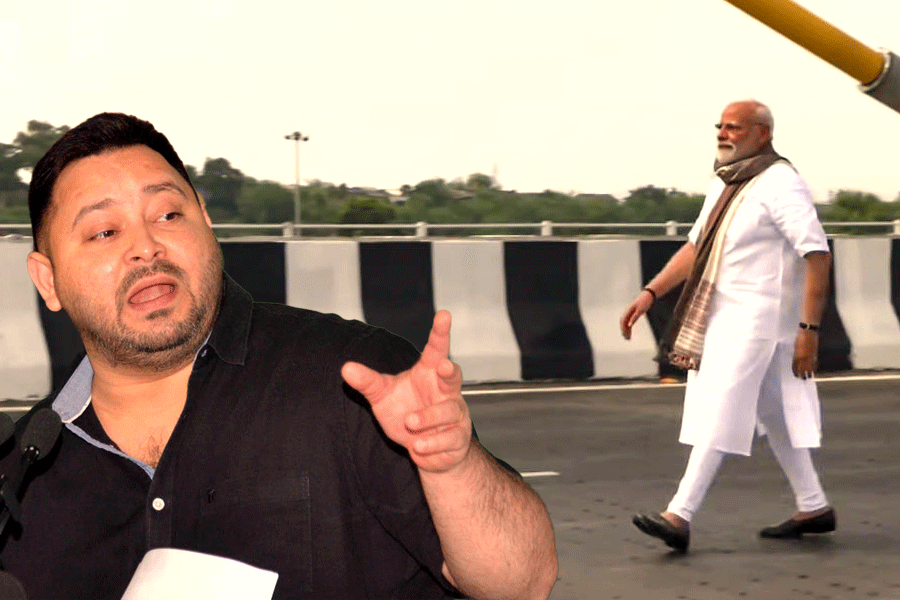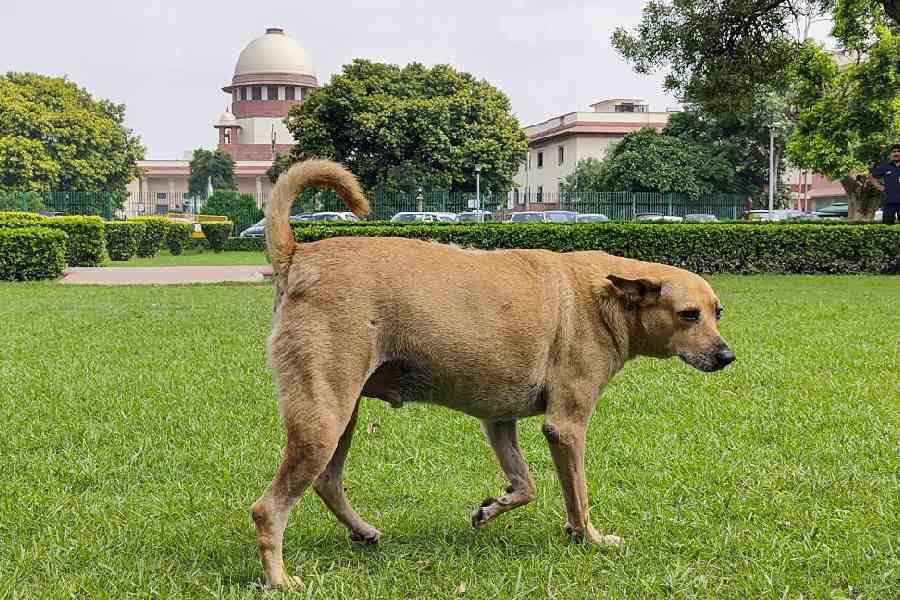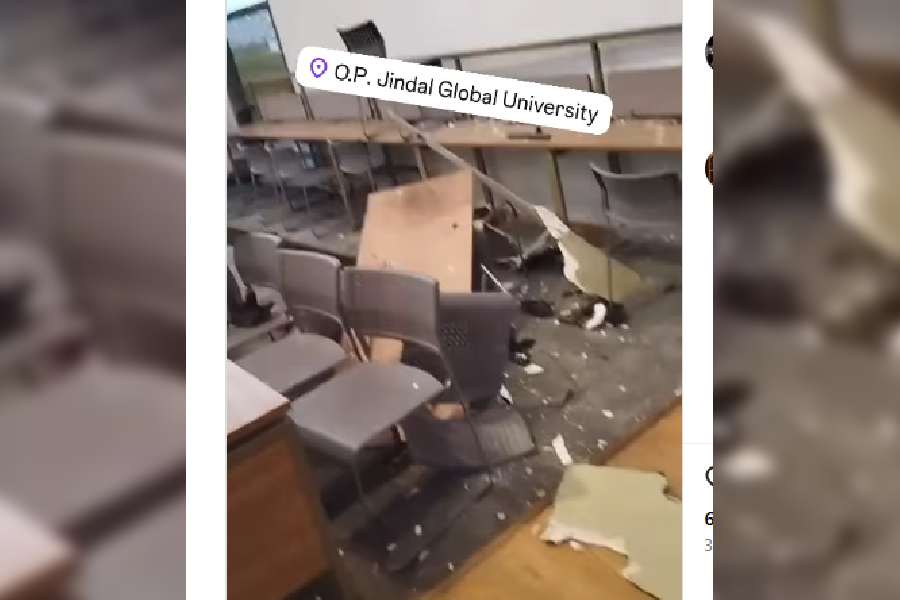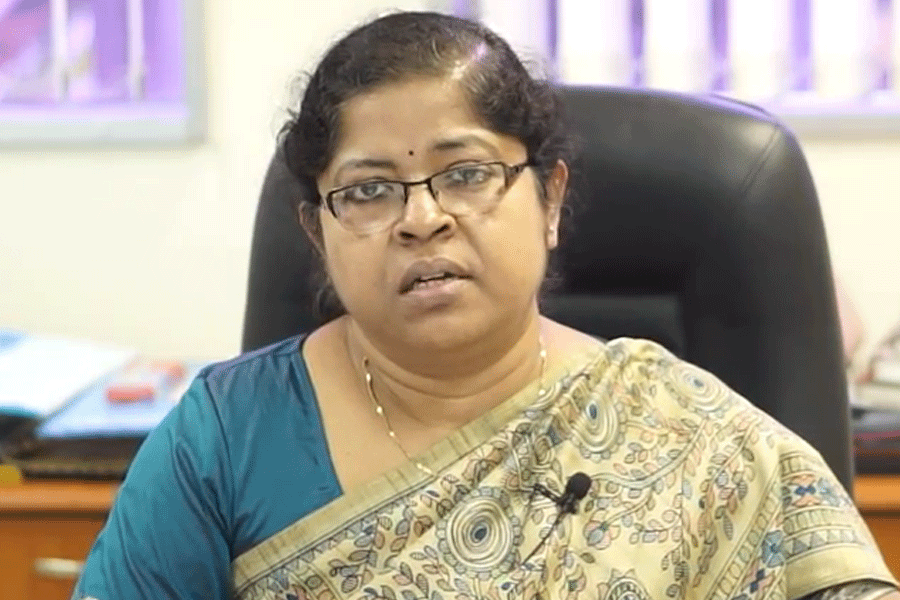 |
| A New Breed: They?re young, tough and making a mark. Members of the youth group Elaan, including founder Pranaadhika Sinha (seated right) held its first awareness workshop for college students on child sexual abuse and incest, on Saturday. Picture by Sanjoy Chattopadhyaya |
The topic of the discussion was fashion. The place was Presidency College and the panel had students as well as famous personalities. Sparks flew as opinions clashed over whether making a fashion statement in college is a trend or a culture. Audience participation spiced things up some more.
On the panel was actress Rupa Ganguly, painter Piu Sarkar, film-maker Subrata Sen, director of the British Council in Calcutta Sujata Sen, principal of Presidency College Amitava Chatterjee, technical head of Friends of Shiva Shubhayan Ganguly and station manager of 93.5 Red FM Jimmy Tangree. There was also a team of two girls from JU and another of two boys from the host college at the debate, held in association with The Telegraph and Ahana.
Moderator Meghna Dass threw questions at the panel to get them going, while youngsters in the audience jumped in with their own queries and comments. Drawing parallels with their own college days, the older generation observed that today?s youth are far more conscious and aware.
Principal Chatterjee felt that neither a dress code nor supervision in the form of fashion police was needed, because ?conservatism has given way to new thought?. Clothes, he added, are important for first impressions in today?s times of ?cut-throat competition?.
Reverse snobbery, ?intellectual? dressing (panjabi-pyjama and Santiniketani jhola), ?imperialist? and ?rebellious? jeans and the ?simple? sari caused much controversy. Madonna?s newfound affinity for mehndi and Ricky Martin?s Buddhist beads, changing traditions and cultural couture, outrageously ahead of the times and hideously behind, the influences of family and society ? these were topics of heated debate over the fashionable, comfortable and propah.
Subrata Sen spoke of the influence of cinema ? Bobby prints and Amanush shirts, Amitabh Bachchan hairstyle and Suchitra Sen/Sharmila Tagore blouses. Sujata Sen spoke of innovation and imagination, creativity and culture, defining fashion. But most agreed that Bengali girl Sushmita Sen becoming Miss Universe was the defining moment for the fashion revolution in Calcutta.
Rupa Ganguly was perhaps the only panelist speaking of the need for propriety. Describing herself as ?very old-fashioned?, she felt that impressing is not always important, and developing once personality is more important than fashion. College, the actress added, was a place of learning, so some propriety is called for. Jimmy Tangree?s declaration ?Be what you are, wear what makes you comfortable? drew her ire, with the exclamation ?you can?t?.
Points and counterpoints flew back and forth as emotions surfaced and involvement of the participants became increasingly personal. The JU team felt that the purpose of clothing, although not necessarily utilitarian, was different for engineering students, who spend time in labs, and arts students. The Presidency team felt in emulating idols, individuality is often lost. Shubhayan Ganguly observed that being fashionable and making a fashion statement are two different things. Finally, it was established that even utopia discourages creativity and individuality.
 |
| Students of Ekalavya Montessori celebrate their graduation at the school?s convocation ceremony. Picture by Sanjoy Chattopadhyaya |
Director?s cut
This film-making process was sans the sounds of ?roll?, ?lights? and ?camera?. There was just the ?action?. Action that originated in the heart, developed in the mind and took shape on screen. For every aspiring film-maker, calling the shots for the very first time is like a dream come true. It wasn?t any different for me.
With two cast members, (Amrita Panja and Rachna Sen, and two crew members, Umakanto Dutta and myself, we set out to do what at first appeared to be a cakewalk. We had it all planned. Sketching the initial frames of every shot, we literally had the entire film on paper. The only hurdle was technology. Working on a shoestring budget of Rs 3,000, we couldn?t afford proper lights, managed only a Hi-8 camcorder to shoot and edited the film on my computer.
Once through with the planning stage, I felt nothing could go wrong. It took just 15 minutes into the film-making to dispel my delusion. The problems of light, unwanted noise from the surroundings and our inexperience kept cropping up.
When I had shared my desire of making a film with a few, they said: ?Film-making is not every man?s job.? The team was young and inexperienced. Even I was slightly sceptical. Our age and inexperience proved to be our disadvantage, but when it comes to NEO (the magazine), it proved to be our greatest advantage.
We wrapped up the shoot in two days (six hours) and then began the tedious task of editing. Today, having seen the film a hundred times, I can safely say, Roll No. 42? Absent! is good enough to be called a film. But it needs a lot of improvements to be in the same league as short films like The Little Terrorist.
Given a chance to go back in time and alter the way things happened, would we be successful in our attempts? Roll No. 42? Absent! dives into the mind of a student who has failed and is attempting suicide. She decides not die, but only after she has taken the plunge. Experimenting with the concept of three different stories, different emotions, different reasons, but an identical beginning and ending in one film was challenging, but satisfying.
The process has taught me a lot and given me enough confidence to make another film, this time on a larger scale. At the end of the day, to see my film ? NEO?s maiden film venture ? on screen is a huge morale booster.
Denzel Washington once said: ?A film is like a muffin. You make it. You put it on the table. One person might say he did not like it, one might say it is the best muffin ever made, one might say it?s an awful muffin. It?s hard for me to say. It?s for me to make the muffin.? I have made my first muffin Now, it?s for people watching to say whether it?s good or bad.
Nirmalya Majumder,
NEO
 |
 |
| (Top) Panelists Sujata Sen, Rupa Ganguly and Subrata Sen at the Presidency College discussion. (Above) Students listen. Pictures by Sanjoy Chattopadhyaya |
Exam fever
Miserable headaches, arms and feet turning icy cold, nausea, butterflies in the stomach, dark shadows and pouches appearing under the eyes ? symptoms of tension and nervousness, when exams are around the corner. Most find it extremely difficult to bear the ordeal.
Hats off to the Unish Kuri Club, run by the magazine of the same name, for organising a workshop on how to prepare yourself before and during the exam. A large number of students turned up to hear guest speaker Tushar Basu, a career counsellor, speak about exam fever.
Basu tried his best to ensure that the students are able to overcome the immense pre-exam pressure without much ado. He presented the students with a list of dos and don?ts. Here?s a sample:
• Early morning is the best time to memorise things like formulae, quotations, poems or history-based answers
• A few months before the exams, one should read the text and other notes once. The next time the text is read, the student should highlight the significant portions
• One should revise the notes at least five to six times. After this, one should work out all the exercises given in the book
• One should sleep well for seven to eight hours the night before the exam
• During the exam, if the student doesn?t know the answer to a question, it?s better not to attempt it rather than give a wrong answer and face the consequences of negative marking
• In the exam hall, one should always keep a cool head and be tension-free.The questions should be read carefully and slowly. Answer briefly and to the point, and try to highlight the important portions. Don?t hurry while answering
• If the student is running short of time, answer the remaining questions in point form. The examiner will understand that the student knows the answer
• Confidence is the key to getting rid of tension and nervousness.
Asif Salam,
Asutosh College
 |
| The dramatics society of Ramjas College, Delhi, performs at the YMCA. Picture by Sanjoy Chattopadhyaya |
Poetry in performance
?Did you bend your mind today?
Did your mind touch the floor?
And then uncorked itself and became your slippers.?
Alternate theatre asserted itself yet again as Shunya, the dramatics society of Ramjas College, Delhi, performed its annual theatre production, 360 Images in Water, at the YMCA on Sunday, March 27.
It was dedicated to the memory of the former president of Shunya, an ardent champion of third theatre, Ankur Mishra, and the 50th death anniversary of Bengali poet Jibanananda Das, who was also once a professor of English at the college. Directed by Parnab Mukherjee, the play explored the sociological and ideological dynamics in the aftermath of the tsunami, weaving together a narrative of performance poems by the director and Amitava Ghosh?s recently-published essay 360 degrees.
From a deeply moving slide show of footage of the disaster taken in south India and Thailand, the audience was absorbed. The three actors (including the director) borrowed shoes to depict the lost and lonely ones left of those washed away by the surging tides. 360 Images in Water touched on issues like the lack of resettlement strategies and the desperation of the victims and the rescuers, drawing interesting comparisons with the Gujarat riots.
The play effectively used the lack of extensive narrative and disturbing images created by the actors. In the small hall, with shoes, ropes, knives, clothes and broken items lying on the wet floor, the audience were transferred in spirit to the fractured landscape of the mutilated beaches littered with corpses and unclaimed belongings.
With bizarre props, actions and sounds, the play created an ambience of darkness under full lights; under the whirl of the ceiling fans it left the audience gasping for breath as if they were under water. Hope, however, was re-asserted, as the performers, picking up symbolic items off the floor, chanted: ?Where the head is held high, and the mind is without fear.?
Said director Mukherjee: ?I don?t want the audience to come out smiling, having enjoyed it. When they hate it and come out disturbed, my job is done.?
The president of Shunya, A. Ravi Kiran, a third-year commerce student of Ramjas, added: ?In alternate theatre, we have found a powerful tool to express ourselves and get a message across. We hope to continue touching lives through this play.?
The group had 45 performances in Delhi and one in Varanasi, on the ghat, where more than 750 people converged to watch them, before they moved on to Pondicherry after a brief exam break.
Madhumita Das


